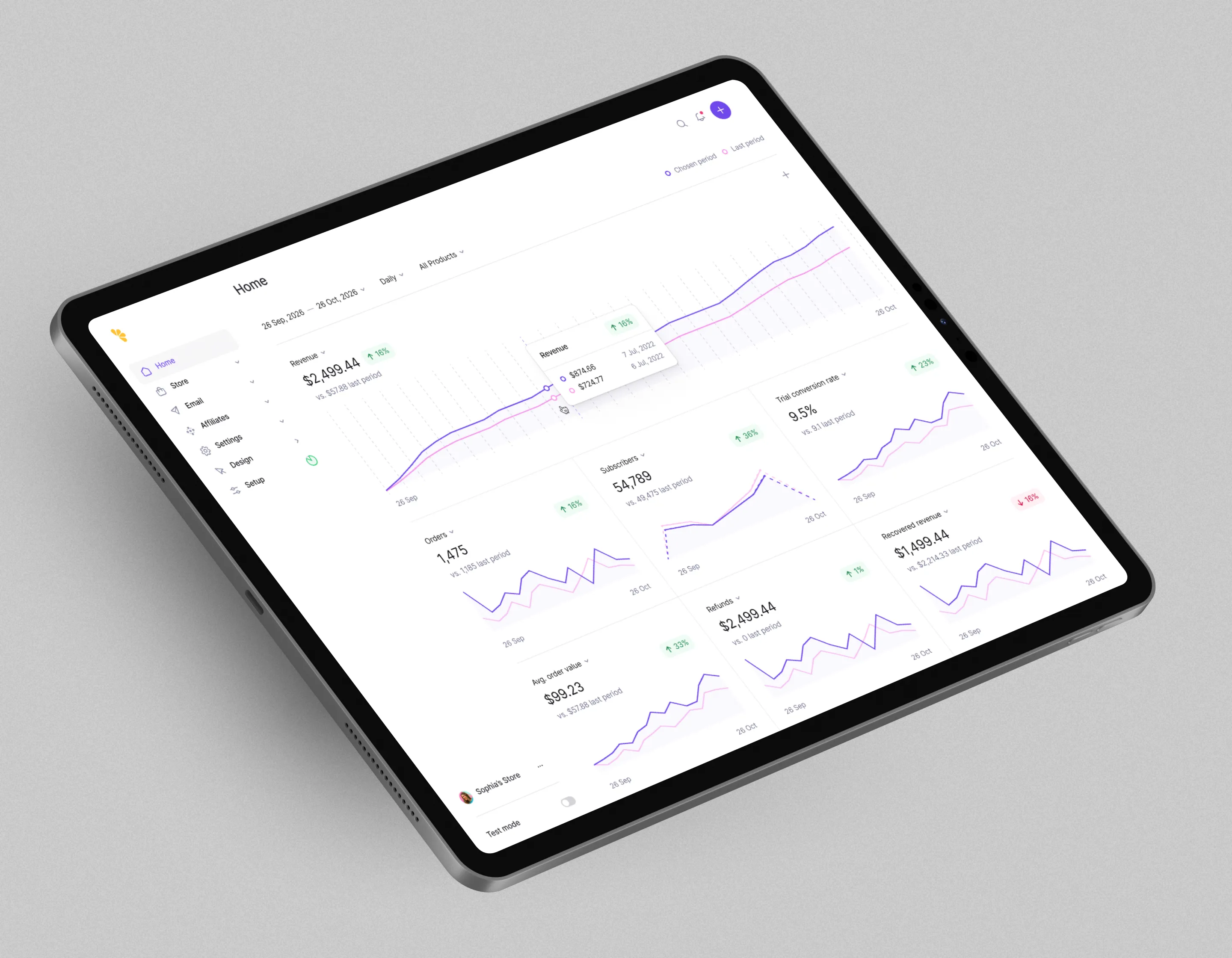
The ultimate guide to SaaS terms you should know
Author
Date
Category
Like any industry, the world of SaaS has developed its own inside jargon. Quickly get oriented with the latest terminology in the SaaS game.
We thought it would be fun and interesting to create a post that could be used as a larger SaaS glossary. It will be a continuous effort as we’ll continually be adding SaaS terms to it. In addition to just naming buzzwords, we’ll provide some perspective for each term and any further resources we’d recommend as well. Definitely stash this away in your bookmarks.
Similar to the ecommerce trend we saw (and are still seeing), software-as-a-service (SaaS) has become an increasingly popular business model for digital software delivery in recent years. It’s almost completely wiped out the idea of on-premise setups when it’s become so cost-effective to host and deliver your service through the cloud.
With that said, and just like any other industry, the world of SaaS has developed its own jargon when it comes to SaaS terms. It’s necessary for any startup founder, CEO, product manager, etc. to orient themselves with the latest terminology in the SaaS game.
SaaS is not simple and comes with it an array of business and technical SaaS terms that are increasingly becoming part of startup discussions. To make it easier for you to build a foundation knowledge of all things SaaS and related business metrics, we have come up with a comprehensive list of terms to help you get a better understanding of these terms.
SaaS Terms Glossary
A
- Average Customer Life (ACL) – measures the amount of time a customer stays subscribed to a service offered by the company. It can be measured in an average number of days or months.
- Annual Recurring Revenue (ARR) – a measure of revenue using predictable and recurring revenue components such as subscriptions or maintenance, normalized to a one-year period. It always excludes one-time fees and variable, usage, and consumption fees.
- Average Revenue Per User (APRU) – the amount of revenue generated per customer.
- Average Selling Price (ASP) – the average amount of revenue generated per signup.
B
- Bookings – the dollar value of contracts within a specific period of time. This includes both subscription and non-subscription revenue.
- Break-even – a point indicating that a company has generated enough revenue to cover the cost of acquiring a customer.
- Burn Rate – the rate per month in which a company spends cash before generating profit.
C
- Cloud – a network of remote servers that are hosted on the internet. It is used to store, manage, and process data in lieu of local servers.
- Cohorts – a group of customers that have simultaneously signed up or took part in the same onboarding group, etc.
- Contextual Engagement – describes a situation wherein the right customer receives the right message using the right channel.
- Contracted Monthly Recurring Revenue – contractually-guaranteed monthly recurring revenue.
- Conversion – the upgrading of an individual from being a site visitor to a user to a customer to a referrer.
- Customer Acquisition Cost (CAC) – the average amount of money spent to acquire a single customer. It is calculated as the sum of all costs incurred in the acquisition of a customer, including sales and marketing expenses, divided by the number of customers acquired within a given period.
- Customer Churn Rate – the rate at which customers are lost through cancellations or failure to renew their subscriptions. This is presented as a percentage of the customers lost to churn over the number of customers at the start of the period for which the churn rate is computed. See our churn rate and SaaS churn posts for more info.
- Customer Experience – the entirety of a customer’s perception toward a company, brand, or product, based on all interactions, touchpoints, and engagements.
- Customer Lifecycle – a concept describing the process undergone by a customer when interacting with a brand or business. There are four critical stages involved in the concept, namely: acquisition, adoption, retention, and expansion.
- Customer Lifetime Value (CLTV or CLV) – a number used to predict the net profit that can be gained during the entire relationship with a customer. It is the amount of revenue gained between the break-even point and the end of the relationship with the customer.
- Customer Relationship Management (CRM) – a term that refers to the practices, strategies, and technologies used by companies to analyze and manage customer interactions throughout the customer lifecycle. It aims to improve customer service relationships to drive customer retention and improve business growth.
- Customer Retention Cost (CRC) – expenses made by the company through efforts made to retain customers. These costs include salaries of employees responsible for customer retention, marketing efforts, and other costs.
- Customer Retention Rate (CRR) – measures the amount of customers remaining after a period has passed, but does not include new customers. This value is the complete opposite of the churn rate.
D
- Dunning – a strategy when your customers fail to make their payment on their renewal date and they’re at risk to churn. You kick off a series of dunning emails you can increase your chances of collecting failed payments or avoiding failed payments altogether. See our Dunning Emails post for more info.
F
- Freemium – a strategy that provides users with limited access to a piece of software free of charge. This aims to entice users into subscribing to the service to enjoy the full benefits of the software.
- Free Trial – customers receive full access to service of software for a pre-determined time frame. e.g. 7-day free trial before you’re charged.
M
- Monthly Recurring Revenue (MRR) – the total amount of revenue from subscriptions expected every month.
- Multi-Tenancy – a term used to describe multiple companies subscribing to a specific service being placed on a single server.
P
- Personalized Customer Experience – the process of designing and delivering targeted messages to the customer to create meaningful customer engagements and improve the customer experience.
- Product Engagements – the sum of all the interactions prospects have with your products.
- Product Life Cycle – defines the progression of products through the four stages of its time on the market. This framework helps companies organize the marketing and sales of a product.
- Product-Qualified Leads (PQL) – prospective clients that have signed up and demonstrated interest or intent to buy or subscribe based on their behavior, usage, or interest on the product.
R
- Retention – the result of providing value or keeping your customers happy to stay on as active customers.
- Retention Rate – the rate of how well you’re able to retain customers.
- Revenue Recognition – the recognition of revenue from a contract at the time it is earned and never before.
S
- Service Level Agreement (SLA) – an agreement that defines the level of service that is expected from the service provider.
- Signup-to-Customer Rate – the percentage of users that have signed up that become paying customers. This value demonstrates how well your company converts signups into paying customers on average.
T
- Total Contract Value (TCV) – a metric that represents the value of one-time and recurring charges but does not include usage charges. It is useful in planning expenditures and managing the growth of businesses.
U
- Unified Customer Profile – a comprehensive profile of a customer that presents an overview of the activity, history, characteristics, and preferences of each customer. It integrates multiple sources of customer information into a single profile to provide a complete view of the customer.
- User Onboarding – the process of getting newly-subscribed users or customers acquainted with the product or service. This process entails training, setting up accounts, and providing assistance to the customer with integrations. This ensures customers will see the full potential of the product or service to improve retention while also expanding the business through referrals. Here’s an awesome resource to see the webs most popular user boarding tear downs.
V
- Value Gap – describes the discrepancy between the expectations a customer has for a product or service and the actual or perceived value received.
- Value-Based Pricing – a pricing model that involves knowing the product features that customers value the most.
Final Words on SaaS Terms
Knowing and understanding the terms listed above is crucial in determining the success of your SaaS business. Some of these SaaS terms involve metrics used by SaaS businesses to measure their revenue, expenses, or amount of growth or decline being experienced by the company while others are terms used to define the interactions made with customers geared to providing a more meaningful experience to customers and improve customer acquisition as well as retention rates.
Ultimately, your familiarity with the different terms and knowledge on what they entail will help guide your business through the ever-changing world of SaaS.
Make sure to check back as we’ll do our best to keep this updated.
By the way, what SaaS terms did we miss?
Whatever stage of your journey, we’re here to help
No matter the stage of your company, we stand behind our promise to provide exceptional customer support, from initial setups to massive migrations and everything in between.
Invest in your business with peace of mind that we're here for you whether you need technical help or business advice.

Creator Guide
Looking for some advice on how to sell and market your digital products? Download the creator’s guide to dive deep into getting your idea off the ground.

Merchant of Record Guide
Free guide for all entrepreneurs and organizations explaining why partnering with a Merchant of Record is more important than you might realize.

Want merch?
Want some fresh Lemon Squeezy swag with all the lemon puns you could ever imagine? The wait is almost over as we’re gearing up for a limited-time merch drop.

Book a demo today and get your own personal guided tour of Lemon Squeezy
Still have questions about Lemon Squeezy? Book a call with our sales team today and we’ll show exactly how we can revolutionize the way your business handles global payments and sales tax forever.

Need help?
If you’re looking to get in touch with support, talk to the founders, or just say hello, we’re all ears.









